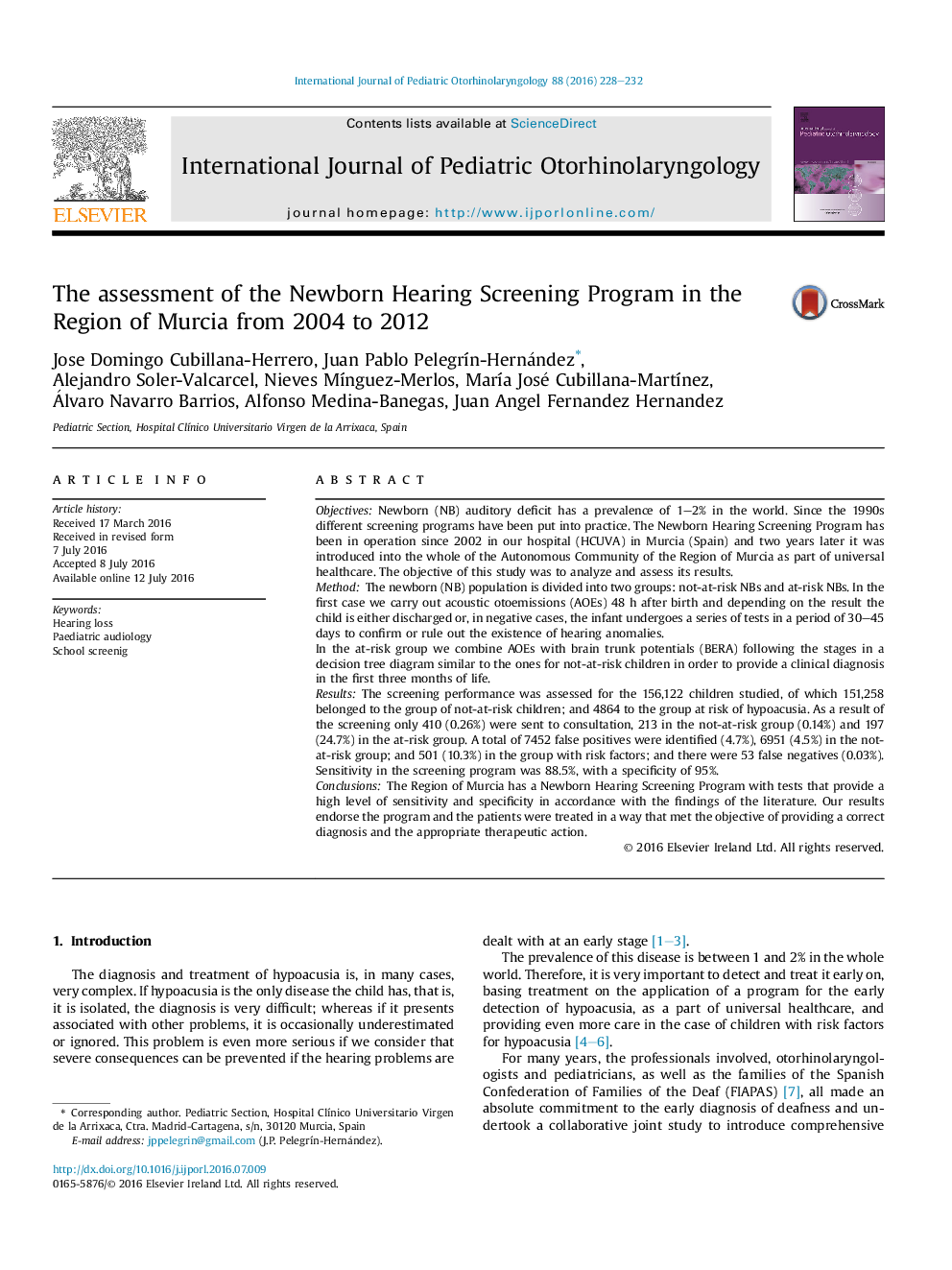| Article ID | Journal | Published Year | Pages | File Type |
|---|---|---|---|---|
| 4111418 | International Journal of Pediatric Otorhinolaryngology | 2016 | 5 Pages |
ObjectivesNewborn (NB) auditory deficit has a prevalence of 1–2% in the world. Since the 1990s different screening programs have been put into practice. The Newborn Hearing Screening Program has been in operation since 2002 in our hospital (HCUVA) in Murcia (Spain) and two years later it was introduced into the whole of the Autonomous Community of the Region of Murcia as part of universal healthcare. The objective of this study was to analyze and assess its results.MethodThe newborn (NB) population is divided into two groups: not-at-risk NBs and at-risk NBs. In the first case we carry out acoustic otoemissions (AOEs) 48 h after birth and depending on the result the child is either discharged or, in negative cases, the infant undergoes a series of tests in a period of 30–45 days to confirm or rule out the existence of hearing anomalies.In the at-risk group we combine AOEs with brain trunk potentials (BERA) following the stages in a decision tree diagram similar to the ones for not-at-risk children in order to provide a clinical diagnosis in the first three months of life.ResultsThe screening performance was assessed for the 156,122 children studied, of which 151,258 belonged to the group of not-at-risk children; and 4864 to the group at risk of hypoacusia. As a result of the screening only 410 (0.26%) were sent to consultation, 213 in the not-at-risk group (0.14%) and 197 (24.7%) in the at-risk group. A total of 7452 false positives were identified (4.7%), 6951 (4.5%) in the not-at-risk group; and 501 (10.3%) in the group with risk factors; and there were 53 false negatives (0.03%). Sensitivity in the screening program was 88.5%, with a specificity of 95%.ConclusionsThe Region of Murcia has a Newborn Hearing Screening Program with tests that provide a high level of sensitivity and specificity in accordance with the findings of the literature. Our results endorse the program and the patients were treated in a way that met the objective of providing a correct diagnosis and the appropriate therapeutic action.
